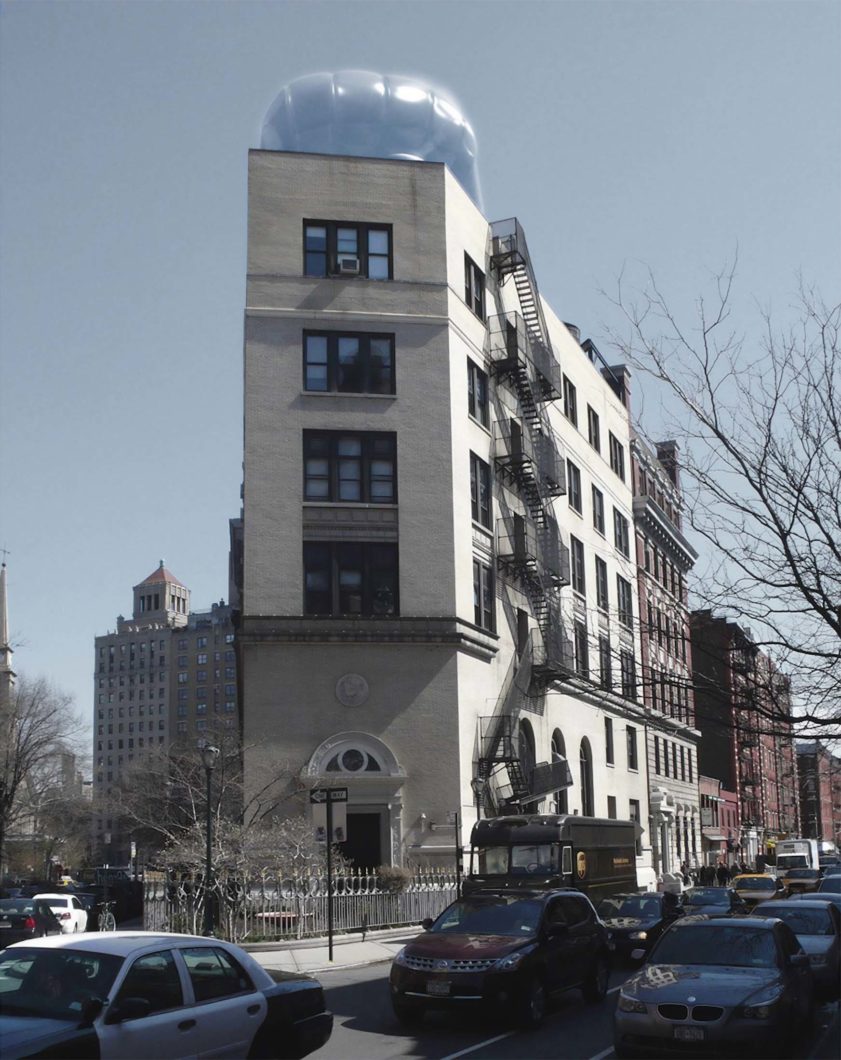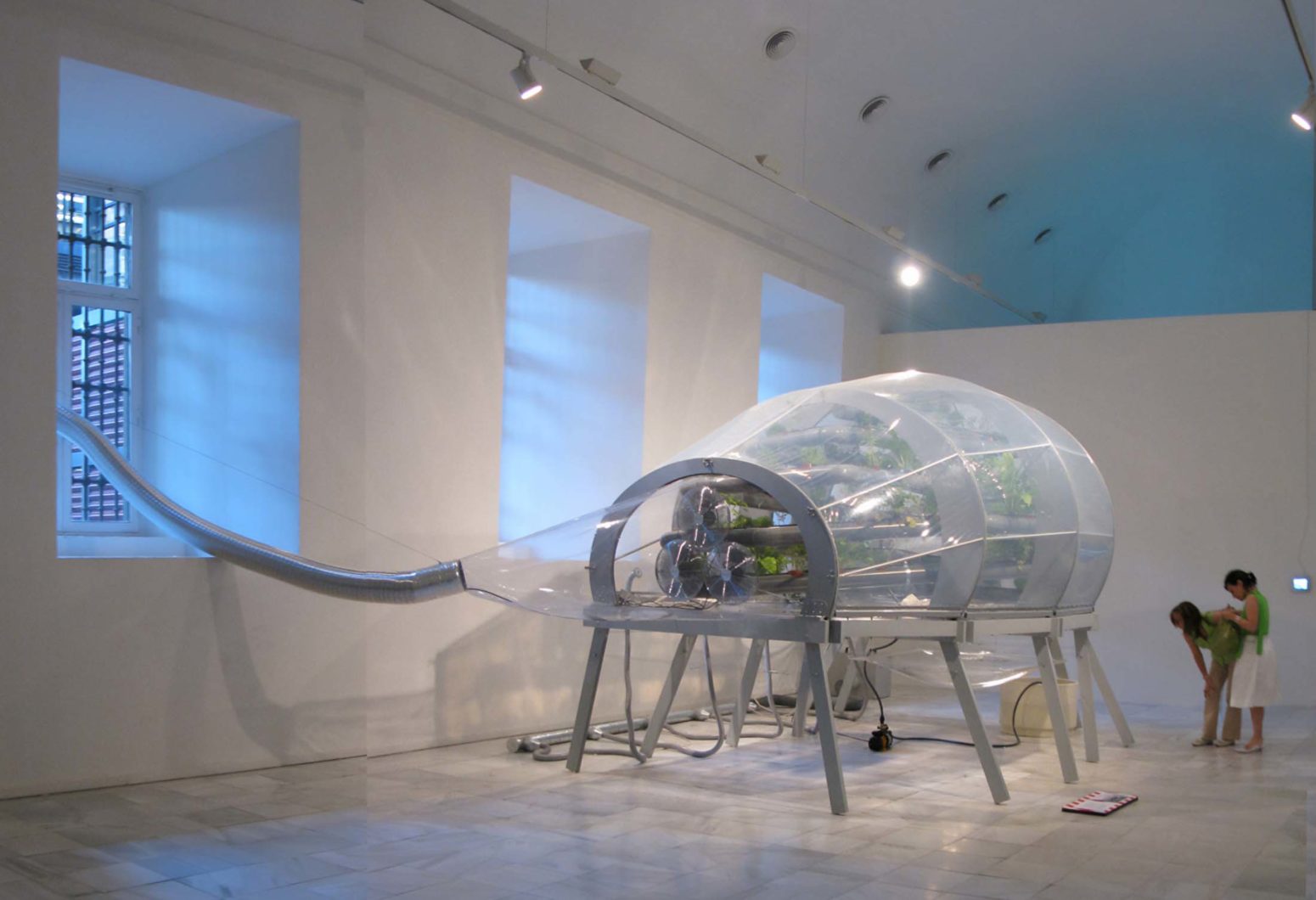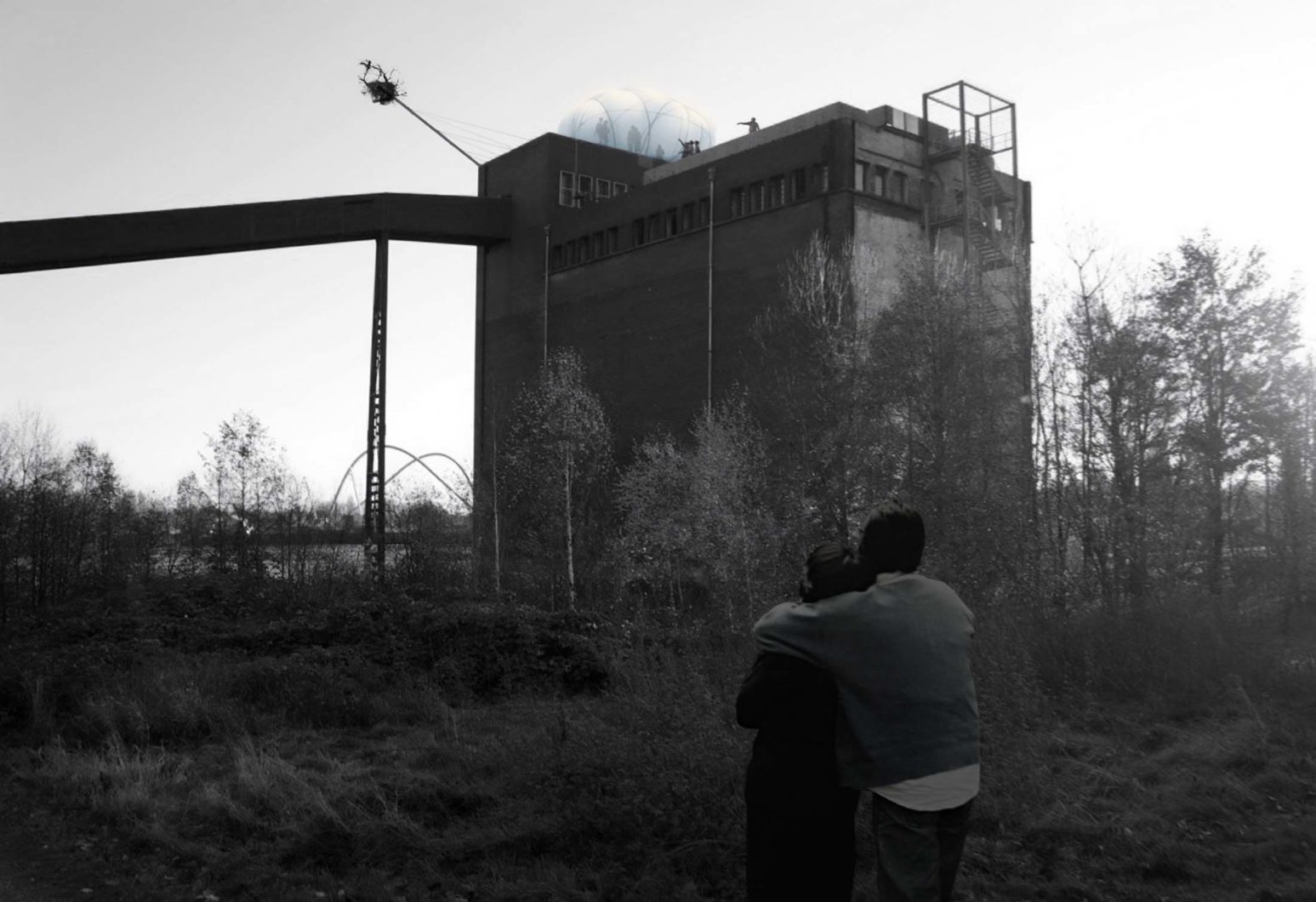Urban Space Station
A device which collects the carbon dioxide emissions from buildings, with a return of oxygen-enriched air for the building




Initiator(s)
Angel Borrego Cubero and Natalie Jeremijenko
Description
The project consists of a device which collects the carbon dioxide emissions from buildings, with a return of oxygen-enriched air for the building itself. It consists of a closed system engineering the same used in space stations. For this reason the device is able to improve the air inside the building by 20 times its own volume. The structure can be adapted with small amendments to function in different types of buildings, transforming wind into energy. Inside the buildings urban vegetation is cultivated, able to provide significant food resources for the building’s inhabitants, and increase food yields.
Goals
The USS is designed to sequester CO2 emissions. A part of this air residue is paradoxically produced in order to clean up air inside buildings themselves. Its main objective consists in perfecting an adaptable prototype to help buildings cope with user demands in a way that allows them reduce their engineering and energy requirements. The USS than can also filter street level air by exploiting building height and thermal capture in south façades to funnel significant volumes of air over inexpensive electrostatic precipitator plates. A by-product of this fine particulates extraction system is the accumulation of enough residue, on average, to make one soot pencil out of every building per day. By decoupling green roofs from the demands of urban agriculture we allow the exterior vegetation of green roofs to function as an open ecological system optimised for biodiversity, phyto-remediation and particulate matter capture.
Beneficial outcomes
Developing the USS has produced a wealth of know-how and information about natural systems integration within and around buildings and urban structures. This knowledge is proving essential in the perfecting of the USS prototype and the planning and design of other proposals, objects, products and urban projects. We now have a more precise idea of building requirements and needs, and how can they be addressed in new ways, without the need to resort to traditional and entrenched engineering and energy practices. And, of course, for the duration of time these prototypes have been installed, some air was cleaned by it and given back naturally smelling of flowers and aromatic plants.
Location
US, Spain, Germany
Users
Natalie Jeremijenko, Angel Borrego Cubero, Fran Gallardo, Giuliana di Gregorio, Noemi Gomez Lobo, Cesar Harada, Jaime Salo, Feike Reitsma, Manuel Borja, Jose Luis de Vicente, Florian Matzner
Maintained by
New York University (USA), Museo Reina Sofia (Spain), Emscherkunst (Germany)
Duration
2008 - ongoing
Category
Scientific
Pedagogical
Politics
Urban Development
Economy
Environment
Social






